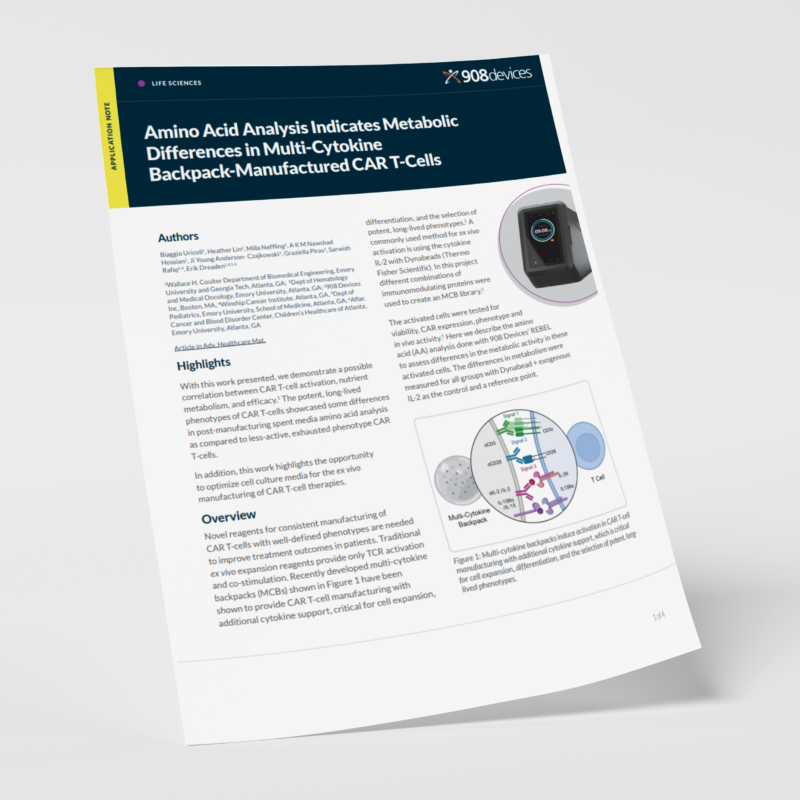Amino Acid Analysis Indicates Metabolic Differences in Multi-Cytokine Backpack-Manufactured CAR T-Cells
With automated quantitation and low sample volume requirements, the REBEL device enables rapid AA analysis compared to the many complexities in traditional analysis methods.

AA analysis is not regularly performed in CAR T-cell experiments due to the complexity and sample volume limitations of traditional methods, but the REBEL device enables rapid analysis, low sample volume requirements and without the need for prior mass spectrometry expertise. Learn how to optimize your cell culture media for enhanced CAR T-cell therapy manufacturing.
This study explores the relationship between CAR T-cell activation, nutrient metabolism, and treatment efficacy. It highlights differences in amino acid (AA) concentrations in spent media between potent CAR T-cell phenotypes and less-active, exhausted ones. By using novel multi-cytokine backpacks (MCBs) in cell culture, the research aims to enhance T-cell manufacturing, focusing on the metabolic profiles linked to different phenotypes. The analysis revealed that certain AAs, such as alanine and glycine, accumulated during culture while others, like arginine, were consumed, indicating active metabolic pathways. With automated quantitation and low sample volume requirements, REBEL facilitated efficient AA quantification, underscoring its potential for optimizing CAR T-cell culture media. Overall, the findings suggest that understanding AA dynamics could improve CAR T-cell therapies.
Subscribe to Our Communications
Signup to receive new product updates, technical tips and more.